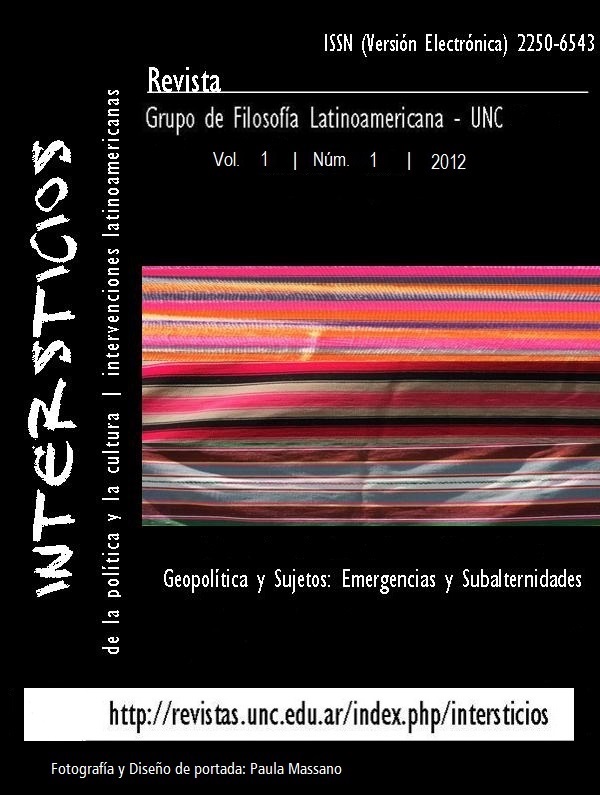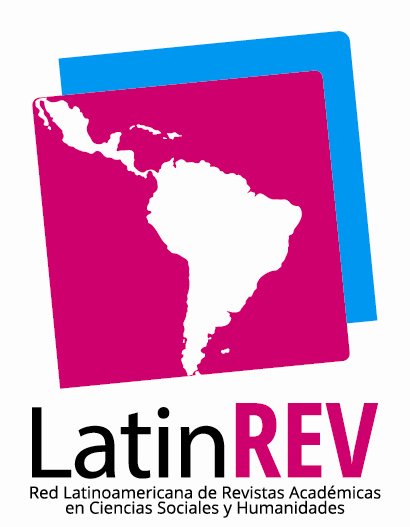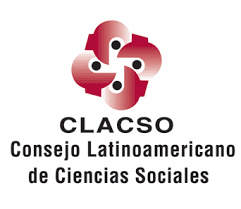TEJIDOS SUBALTERNOS DE REVOLUCIÓN. PENSANDO LAS AUTONOMÍAS LATINOAMERICANAS.
Resumen
Resumen:
¿Cómo es posible pensar una “revolución intersticial”? ¿Cuales son los nuevos momentos revolucionarios de América Latina?
Este trabajo apunta a pensar las democracias latinoamericanas, sus legitimaciones, sus agentes, sus instituciones; cómo conviven, luchan, dialogan, cómo hacen política.
Nuestra perspectiva filosófica-política implica a la democracia, como una constante invención, que produce efectos de sentido en el imaginario político latinoamericano.[1] Dar a la democracia el “terreno de la invención” es reflexionar filosóficamente acerca de las condiciones de posibilidad de los sujetos políticos que se encuentran actuando en dichas democracias. Nuestra intención es poder visualizar a las democracias contemporáneas como un juego entre subjetividades insurgentes, tiempos y espacios de revueltas, rebeliones, revolución (es).
Si aceptamos que la revolución es inevitablemente intersticial[2], nos surgen nuevas preguntas: ¿En qué medida las posiciones de sujeto contribuyen a pensar los espacios intersticiales de emancipación? ¿De qué sujeto hablamos?
Mediante estos interrogantes y los puntos que hemos señalado, nos proponemos dos momentos para tener presentes en el análisis: por un lado, las democracias latinoamericanas como otro lugar de la política y por el otro, los sujetos de las democracias como sujetos subalternos.
Palabras Claves: lo político, sujetos subalternos latinoamericanos, revolución intersticial.
Abstract:
How is possible think one “interstitial revolution”? Which are the new revolutionary moments of Latin-America?
This word point to think the Latin America democracies, it’s legitimizations, it’s agents, it’s institutions; how to coexist, fight, dialogue, how they do the politics.
Our philosophical - political perspective implies to the democracy, as a constant invention, which produces effects of sense in the imaginary Latin-American political. To give to the democracy the field of the invention is think philosophically about the conditions of possibility from the political subjects that are acting in the mentioned democracies. Our intention is, can visualize the contemporary democracies as a game between insurgents subjectivities, times and spaces of revolts, rebellions, revolution (s).
If we accept that the revolution is inevitably interstitial, us new questions arise: In what measure the positions of subject contribute to think in the interstitial spaces of emancipation? What subject do we speak?
Through these questions and the points that we have indicated, we propose two moments to be present in the analysis: on the one hand, the Latin -American democracies like another place of the politics and on the other one, the subjects of democracies as subaltern subjects.
Key words: Latin American, subaltern subject, interstitial revolution.
[1] Véase Liendo C. y Gramaglia P. (2008); Sujetos colectivos en espacios públicos: Democracia y Política en la historia de las ideas de América Latina; Proyecto: Secyt-Ciffyh, UNC. Res. Secyt69/08; Córdoba Argentina.
[2] Holloway J. (2012); Acerca de la revolución; Capital Intelectual; Bs. As Argentina.
Descargas
Descargas
Publicado
Cómo citar
Número
Sección
Licencia
Aquellos autores/as que tengan publicaciones con esta revista, aceptan los términos siguientes:- Los autores/as conservarán sus derechos de autor y garantizarán a la revista el derecho de primera publicación de su obra, el cuál estará simultáneamente sujeto a la Licencia de reconocimiento de Creative Commons que permite a terceros compartir la obra siempre que se indique su autor y su primera publicación esta revista.
- Los autores/as podrán adoptar otros acuerdos de licencia no exclusiva de distribución de la versión de la obra publicada (p. ej.: depositarla en un archivo telemático institucional o publicarla en un volumen monográfico) siempre que se indique la publicación inicial en esta revista.
- Se permite y recomienda a los autores/as difundir su obra a través de Internet (p. ej.: en archivos telemáticos institucionales o en su página web) después del proceso de publicación, lo cual puede producir intercambios interesantes y aumentar las citas de la obra publicada. (Véase El efecto del acceso abierto).










